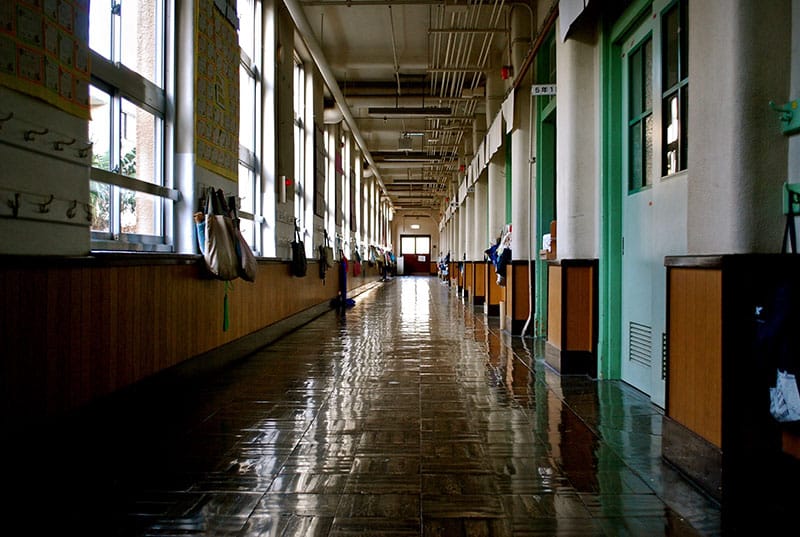Who’s at risk from asbestos in schools?
Today, when most of us think of asbestos, we think of the notorious material that we now know to be carcinogenic. There is a strong and well-established link between exposure to asbestos and the subsequent development of often fatal health conditions, such as asbestos-related lung cancer and mesothelioma – albeit, subject to a long latency period of potentially many decades.
But on the other hand, the use of asbestos has now been banned in the UK since 1999. And while the material remains widespread in school buildings up and down the country, there has long been stringent regulation in the UK to help control the risk the substance still presents.
So, in the 2020s, what is the true situation of asbestos in schools across the UK? And who is at risk of coming into contact with asbestos in schools today?
What is the history of asbestos use in schools?
Asbestos is a naturally occurring fibrous mineral that was heavily used in the UK construction industry for the bulk of the 20th century.
There was a time – especially in the middle decades of the 20th century – when asbestos looked like an extremely obvious choice of building material for schools, and even a “wonder material”. After all, it was relatively easy to obtain and affordable, at the same time as offering impressive strength, thermal insulation, and fire resistance.
However, by the 1970s and 1980s, it was becoming much more widely known that the breathing in of asbestos posed a potentially very serious risk to health. This led to ever-greater pressure to ban the use of the substance, and sure enough, all forms of asbestos were eventually banned in the UK in 1999.
Where can asbestos be found in schools?
Asbestos was routinely used in various products that remain present today in many school buildings dating from before the year 2000. Those products include the likes of:
- Asbestos lagging on pipes and boilers
- Sprayed asbestos for fire protection and thermal insulation
- Asbestos-insulating board (AIB), again for fire protection and thermal insulation
- Textured coatings
- Cement roofing and guttering
- Floor tiles, and some ceiling tiles
A school building that was constructed after the period when asbestos was legal to use in construction, should not contain the harmful substance.
However, with buildings from before the year 2000 still being present on so many school sites, this meant that – according to the findings of a Department for Education (DfE) survey in 2019 – around four in every five schools still contained asbestos.
Who’s at risk from asbestos in schools?
There is no one who works in or uses school buildings in the UK – presuming those school buildings contain asbestos – who can consider themselves to be at zero risk of coming into contact with the lethal material.
Indeed, in July 2022, the UK Health and Safety Executive (HSE) acknowledged that people who work in schools are at a higher asbestos risk than nurses, shop workers, and factory workers.
On the other hand, however, asbestos that is in good condition, undisturbed, and well-managed in accordance with the UK’s stringent asbestos regulations, is not believed to pose a significant risk to the health of those using school buildings for normal activities.
The asbestos risk that schools can present, however, generally arises when the material is disturbed. Such disturbance is likelier to be caused by certain individuals than others – for example, caretakers and contractors – and could cause the release of dangerous asbestos fibres into the air.
Those fibres are difficult to see with the naked eye, and could be easily be breathed in by someone nearby, with all the associated health risks.
People carrying out maintenance activity and external contractors
Someone who undertakes maintenance or installation work on a school premises, or any potentially intrusive work such as drilling or fixing, could be particularly likely to cause disturbance to asbestos-containing materials (ACMs) on-site.
There could be an especially great risk of this happening, if the person carrying out such work is not even aware of the ACMs nearby.
This is why the “duty to manage” asbestos, as outlined in the Control of Asbestos Regulations 2012 (CAR 2012), requires dutyholders for non-domestic premises to provide information on the location and condition of ACMs to anyone who is liable to work on or disturb them.
Is it possible for children to be at risk?
In theory, if asbestos fibres are released on school premises, anyone in the proximity could breathe in or ingest those fibres, including any teachers or children.
Although children might be at somewhat lower risk of being exposed to asbestos in the first place than a caretaker or contractor, in the event that they are exposed to the substance, they could be at even greater risk of subsequent ill health than adults. This is because a child’s lungs are more susceptible to the effects of asbestos fibres.
The good news is that as long as any asbestos is properly managed, in good condition, and undisturbed, neither children nor teachers are likely to be at risk in the course of their normal activities.
Should parents be worried?
With asbestos not likely to pose a significant risk to the health of teachers or pupils provided that the above conditions are satisfied, it is important for parents not to be unduly worried, even if asbestos is, indeed, present in their child’s school.
Often, any ACMs that do exist in a given school building will be contained sufficiently deeply within the structure of the building to not be susceptible to disturbance by teachers or pupils.
Furthermore, schools in the UK today are subject to strict rules in relation to how they manage asbestos, as laid out by the Control of Asbestos Regulations 2012 (CAR 2012). And the HSE has said that where it has carried out inspections of schools, it has found that most such institutions have good standards for the management of asbestos in their buildings.
If you are a parent and you are concerned about the presence of asbestos in your child’s school and would like to know more about what arrangements are in place to control the risk from ACMs, you are advised to seek reassurance from the school – or, where relevant, the local authority.
What can be done to prevent asbestos exposure in schools?
Various measures can be adopted to help greatly minimise the risk of any given person in a school building being exposed to asbestos.
The aforementioned CAR 2012 sets out important requirements for dutyholders to follow. Such dutyholders are expected, for example, to take reasonable steps to determine the location, amount, and condition of ACMs on the school site. Dutyholders must also make, and keep up to date, a record of the on-site ACMs, and they are also required to have a plan for managing asbestos risks on the premises.
Through a system of surveying, testing, monitoring, and removal if necessary, dutyholders can greatly help to lower the likelihood of anyone in a school building disturbing asbestos. Teachers and other staff can also play their part in minimising that risk, such as by not pinning or tacking schoolwork to ceiling tiles or insulation board.
We hope that this article has helped to make clear who is potentially at risk from asbestos in schools, and what steps can be taken to manage this risk. To learn more about our own asbestos services here at Oracle Solutions and to request a fast and free quote, please do not wait to contact us, whether by phone or email.

Written by Mark Carter
Mark Carter is a renowned expert in asbestos management, offering clients vital guidance on compliance and safety. His expertise is invaluable for navigating asbestos regulations, ensuring both safety and legal adherence. Mark's role is central in providing effective asbestos-related solutions, helping clients achieve their business objectives with an emphasis on regulatory compliance and safety in asbestos management.

